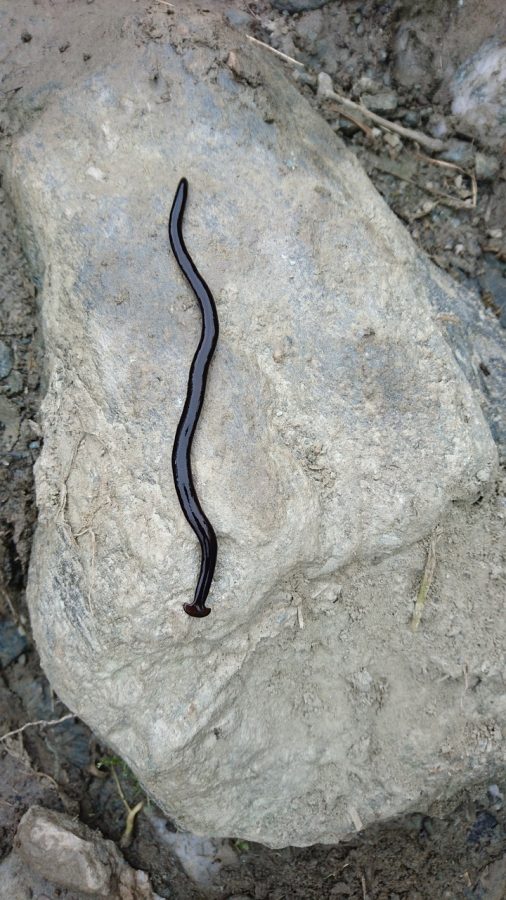The Hammerhead Flatworm: Invasive, Cannibalistic, And Immortal
Everything you need to know about Bipalium kewense, the hammerhead flatworm
Source: Nikhil Dev
The Bipalium kewense, commonly known as the hammerhead flatworm or hammerhead slug, is a carnivorous and often cannibalistic species of flatworm. It is typically light-honey colored and has one to five dark dorsal stripes (stripes along the worm’s back). These animals are also a threat to any ecosystems they inhabit because of their primary food source—earthworms. Earthworms are incredibly important to the environment because their tunnels bring in oxygen, drain water, and create space for plant roots.
The hammerhead flatworm secretes chemicals through their skin, which makes themselves noxious to predators and makes digesting earthworms easier. These chemicals can also cause irritation to humans who touch the worm or animals who ingest it.
This invasive species is “immortal” because they have a unique feature shared among flatworms and nematodes—the ability to regenerate into two worms if cut. This means if you cut a hammerhead flatworm in half, it will turn into two hammerhead flatworms. From boston.com, “the worm is difficult to kill because it reproduces asexually through a process called ‘fragmentation.’ [Fragmentation is when a small rear portion of the worm pinches off and is left behind as the worm moves forward] Within about 10 days, it said, the head begins to form [on the cut off half of the worm], and this can happen a few times a month.”
Egg cases have been found, which suggests that this already fast-spreading species is capable of both asexual and sexual reproduction. Killing hammerhead flatworms requires dissolving them in salt, which can be done by putting them in a plastic bag and a sufficient amount of salt (after dissolving, it is safe to dispose of). Although not much is known about these worms yet because they have only been scarcely observed since 1980, it is important to know that they live in humid environments like tropical and subtropical regions of Earth.
If you do happen to spot a hammerhead flatworm, please dispose of it to help stop this invasive species from killing off earthworms and damaging our fragile environment.
RELATED STORIES:
- https://eastland.agrilife.org/invasive-hammerhead-flatworms
- http://www.tsusinvasives.org/home/database/bipalium-kewense
- https://www.usatoday.com/story/news/nation/2022/04/20/hammerhead-worm-invasive-louisiana
- https://www.boston.com/news/local-news/2022/04/26/what-you-need-to-know-flatworms-maine-hammerhead-worm
- https://animals.howstuffworks.com/animal-facts/hammerhead-worms.htm
TAKE ACTION:















